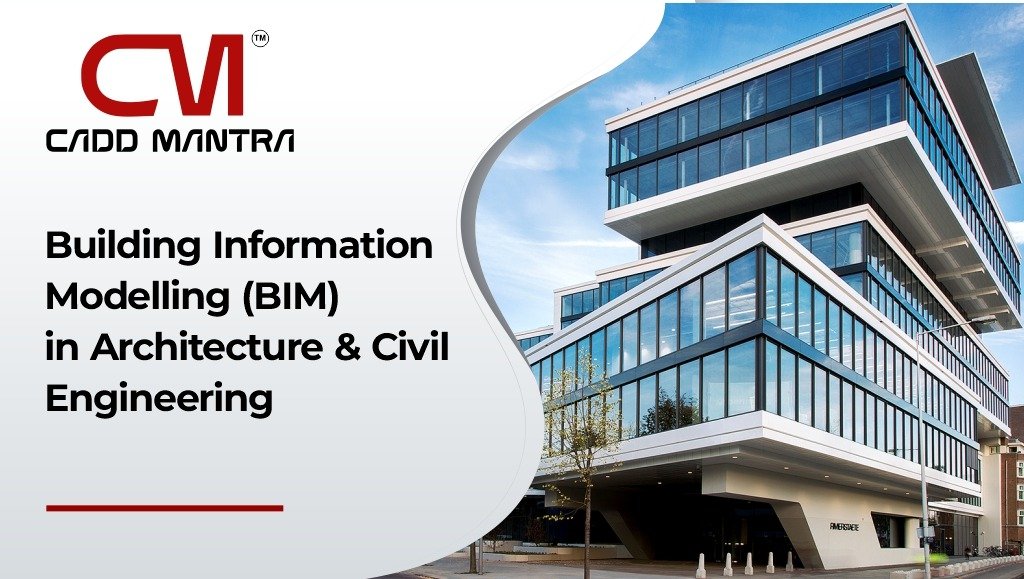In the dynamic landscape of architecture and civil engineering, staying ahead often entails embracing innovative technologies that streamline processes and enhance project outcomes. Among these technologies, Building Information Modelling (BIM) stands out as a game-changer, revolutionizing the way professionals design, construct, and manage buildings and infrastructure. In this blog post, we delve into the myriad benefits of BIM for architects and civil engineers, explore its utilization in India, highlight leading companies leveraging BIM, and shed light on the opportunities for learning and mastering BIM, particularly at CADD Mantra in Lucknow.
Understanding Building Information Modelling (BIM)
At its core, BIM is a digital representation of physical and functional characteristics of a built asset. Unlike traditional 2D drafting tools, BIM incorporates intelligent 3D models that contain not only geometric information but also data pertaining to materials, spatial relationships, and more. This holistic approach facilitates better collaboration, visualization, analysis, and decision-making throughout the project lifecycle.
Benefits for Architects and Civil Engineers
1. Enhanced Collaboration:
• BIM fosters collaboration among architects, civil engineers, contractors, and other stakeholders by providing a centralized platform for data sharing and communication.
• Real-time updates and seamless integration of changes ensure everyone remains on the same page, minimizing errors and conflicts.
2. Improved Design Efficiency:
• With BIM, architects and civil engineers can create detailed 3D models that enable thorough visualization and analysis of design elements, leading to more informed decision-making.
• Parametric design capabilities allow for rapid iteration and optimization of designs, resulting in improved efficiency and innovation.
3. Cost and Time Savings:
• BIM facilitates accurate quantity takeoffs, cost estimation, and scheduling, helping professionals identify potential conflicts and inefficiencies early in the design process.
• By simulating construction sequences and identifying clashes before breaking ground, BIM reduces costly rework and delays, ultimately saving both time and money.
4. Sustainable Design:
• BIM enables architects and civil engineers to evaluate the environmental performance of their designs through energy analysis, daylighting simulations, and lifecycle assessments.
• By optimizing building performance and reducing resource consumption, BIM contributes to the creation of more sustainable and resilient structures.
Utilization of BIM in India
BIM (Building Information Modeling) is gaining popularity in India’s architecture, engineering, and construction (AEC) industry. Big names in the construction, architecture, and government sectors are using BIM to make their projects better. BIM is used in various areas in India:
• Infrastructure projects like building roads, railways, and city facilities.
• Smart city plans that use technology to improve city life and sustainability..
• Architectural designs for different types of buildings, from homes to tall office buildings.
BIM helps by providing detailed digital models of buildings and infrastructure. These models include information about materials, structures, and systems used in construction. By using BIM, planners, architects, and builders can work together more efficiently. It helps them spot potential problems early, saving time and money. Building Information Modeling is becoming an essential tool for modern construction projects in India, promising better quality and innovation.
Leading Companies Leveraging BIM
Several renowned companies in India have embraced BIM as a cornerstone of their project delivery process. Among them are:
1. Larsen & Toubro (L&T)
2. Tata Projects
3. Shapoorji Pallonji Group
4. Hindustan Construction Company (HCC)
5. Gammon India
These industry leaders recognize the transformative impact of BIM on project outcomes and are committed to leveraging its capabilities to stay competitive in the market.
Learning Opportunities at CADD Mantra, Lucknow
For professionals seeking to enhance their skills and stay abreast of industry trends, CADD Mantra in Lucknow offers comprehensive training programs in BIM. With BIM courses in lucknow, tailored to meet the needs of architects, civil engineers, and other AEC professionals, CADD Mantra provides hands-on training in BIM software such as Autodesk Revit, Navisworks, and BIM 360.
With experienced instructors and state-of-the-art facilities, CADD Mantra ensures that students gain practical knowledge and proficiency in BIM, empowering them to excel in their careers and contribute to the advancement of the AEC industry.
In conclusion, Building Information Modelling (BIM) holds immense potential for architects and civil engineers, offering benefits ranging from enhanced collaboration and design efficiency to cost savings and sustainability. In India, the adoption of BIM is on the rise, with leading companies leveraging its capabilities to drive innovation and improve project outcomes. For professionals seeking to master BIM and stay ahead in their careers, CADD Mantra in Lucknow provides a premier learning environment with tailored courses and expert instruction. Embracing BIM is not just about staying current – it’s about unlocking new possibilities and shaping the future of architecture and civil engineering.




